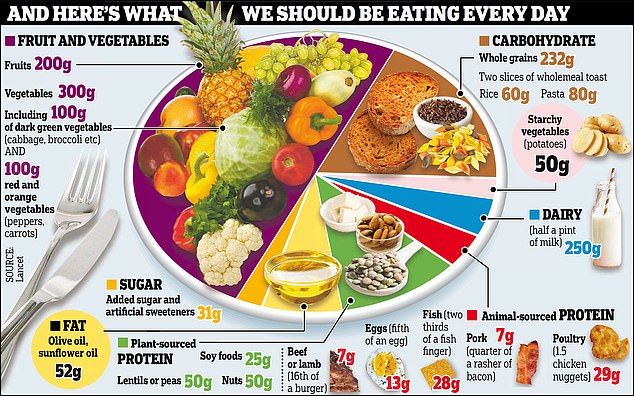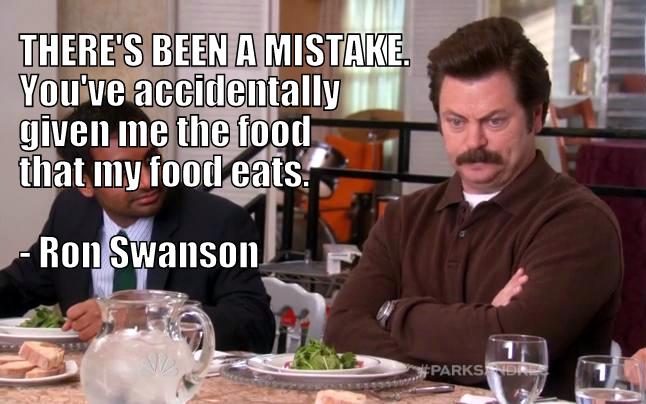So we can’t have our cake and eat it too. What if we change the recipe?
This week’s Food Climate Research Council (FCRN) newsletter revisits Tara Garnett’s 2014 discussion paper for FCRN titled ‘What is a sustainable healthy diet?’, a question that I have been considering myself over the last few weeks while exploring the concept of ideal diets.
According to Dr Garnett, despite a number of caveats, a healthy and sustainable diet is…
Diverse – a wide variety of foods eaten
In energy balance
Based around: tubers and whole grains (but not rice); legumes; fruits and vegetables
Dairy/fortified plant-substitutes, in moderation with other calcium-rich foods
Meat eaten sparingly – and all animal parts consumed
Unsalted seeds and nuts included
Some fish/aquatic products from certified fisheries
Limited consumption of sugary and fatty sweets, chocolates, snacks and beverages
Tap water in preference to other beverages
The question of whether we can both sustain ourselves in a way that is optimal for health and wellbeing and do it sustainably is particularly pertinent this week with the release of the Intergovernmental Science-Policy Platform on Biodiversity and Ecosystem Services (IPBES) key take-aways (summary for policy-makers) ahead of the publication of their assessment report on the state of global biodiversity and ecosystems later this year. Agriculture (and fishing) features strongly in the assessment, as both a contributor to the ‘unprecedented’ global declines in species and ecosystem productivity losses, and as an area of particular vulnerability to these changes. The link between food systems and biodiversity is neatly summed up by IFPRI Director-General, Shenggen Fan:
National dietary guidelines (FBDGs) are also starting to include sustainability considerations in their advice on what to eat (Herforth et al., 2019; Gonzalez-Fischer and Garnett, 2016; van Doreen et al., 2014). Brazil, Germany, Qatar and Sweden explicitly include sustainability in their FBDGs, while Australia and the United States FBDGs mention it. Quasi-official guidelines in the Nederlands, Nordic countries, Estonia, UK and France also incorporate sustainability. Generally these considerations involve updating protein advice to provide more information on nutrient replacement needs and alternative foods to eat (in what proportion) when changing (or eliminating) intake from red meat, in particular, due to its contributions to climate change (Gonzales-Fischer and Garnett, 2016). Other areas of revision include intake of fish (due to overfishing) and to a lesser extent, palm oil, for its contribution to deforestation.
Trying to change the recipe: The EAT-Lancet Planetary Health Diet
Earlier this year, the EAT-Lancet Commission on Food, Planet and Health launched its Planetary Health Diet, proposing a global reference diet (of the kind used in the DQIs discussed in my last blog) that sets targets for both optimal health outcomes and limiting environmental impacts.
In general, the Planetary Health Diet aligns with Dr Garnett’s sustainable healthy diet (indeed, she contributed to its design) as well as Michael Pollan’s maxim: ‘Eat food. Mostly plants. Not too much’ (see my first post).
The launch of the Planetary Health Diet was not without its controversies
—its proponents are still on the circuit defending it—which, I think, was kind of the point. As the above publications demonstrate, we now know the impact of our food systems (and wider resource use) on the environment. What use would there be to presenting an alternative model that doesn’t challenge the status quo?

“‘Planetary health diet’ which suggests we should swap meat and diary for BEANS to save the earth is slammed by experts as ‘radical and irresponsible'” (16 Jan, 2019)
The highest profile criticism has come from the Italian permanent mission to the United Nations which raised concerns with the diet’s impact on public health and the economies of developing countries depending on livestock production. This opposition apparently resulted in the WHO withdrawing its support for the new reference diet. More broadly, the key areas of criticism with EAT-Lancet’s proposition can be summarised as (drawn from FCRN coverage):
| Reduction in red meat and dairy |
| “Farming, in particular dairy and red meat, is part of the solution, making best use of naturally occurring assets to feed a growing population.” (UK’s Agriculture and Horticulture Development Board (ADHB)) Alternative proteins are often highly processed and may require imported ingredients, which might be produced to lower environmental standards (e.g. ADHB). Some alternative plant-based fats and oils can more environmentally destructive – e.g. palm oil/soybean, and rape/sunflower seed monoculture’s impact on pollinators (e.g. Sustainable Food Trust). Red meat provides important nutrition that is underlooked in the report (e.g. ADHB, British Meat Processors Association). Red meat is not the problem; coal and oil are (e.g. Allan Savory, ecologist/holistic land management); we need pastoralism for regenerative land management and to prevent desertification. People won’t just give up meat – invest in ‘clean’ (plant-based and cell-based) meats industry to replace supply of unsustainable and unethical meat production (e.g. the Good Food Institute). Instead, reduce/eliminate all intensively produced meat to minimise environmental footprint an increase welfare. Reduce supply and consumption of meat; minimal production of sustainable pasture/woodland based systems (e.g. RSA Food Farming and Countryside Commission; David Crossly, Food Ethics Council). |
| Nutritional requirements |
| The ‘healthy reference diet’ may not satisfy recommended nutrient intake (e.g. obesity researcher Dr Zoe Harcombe compared the diet to USDA food composition database and suggests it would only provide i.e. 5% vitamin D, 22% sodium and 55% calcium). Evidence for the ‘unhealthiness’ of saturated fats is questioned (e.g. Sustainable Food Trust). |
| Environmental and economic implications |
| Shifting production to align with the dietary pattern will have significant consequences that need to be addressed (e.g. Ginni Braich and Juan Diego Martinez looked at the expansion of tree nut production as an example in ‘The nature of food’). |

While it may turn out that following the Planetary Health Diet is not possible (not just preferable) for all populations, or that it is no more ‘healthy’ than other dietary patterns, at the very least it has got more people talking about these problems and how we could fix them—what we think we should lose, what we want to keep, and why.
Further, it demonstrates the increasing prominence of sustainability in what we consider to be ideal diets (at least in academic circles). And the backlash from interest groups–e.g. livestock producers who would like to keep their jobs, please and/or those that live in areas where shifting to crop production is not feasible—gives us a taste for the prevailing importance of other considerations such as personal preference and identity, culture and history, taste, socio-economic status and local production or import capacity, as well as newer values such as equity and social inclusion, animal welfare, and workers’ rights to how particular populations (or individuals) make decisions about the food they eat, when they are in a position to do so.
-A